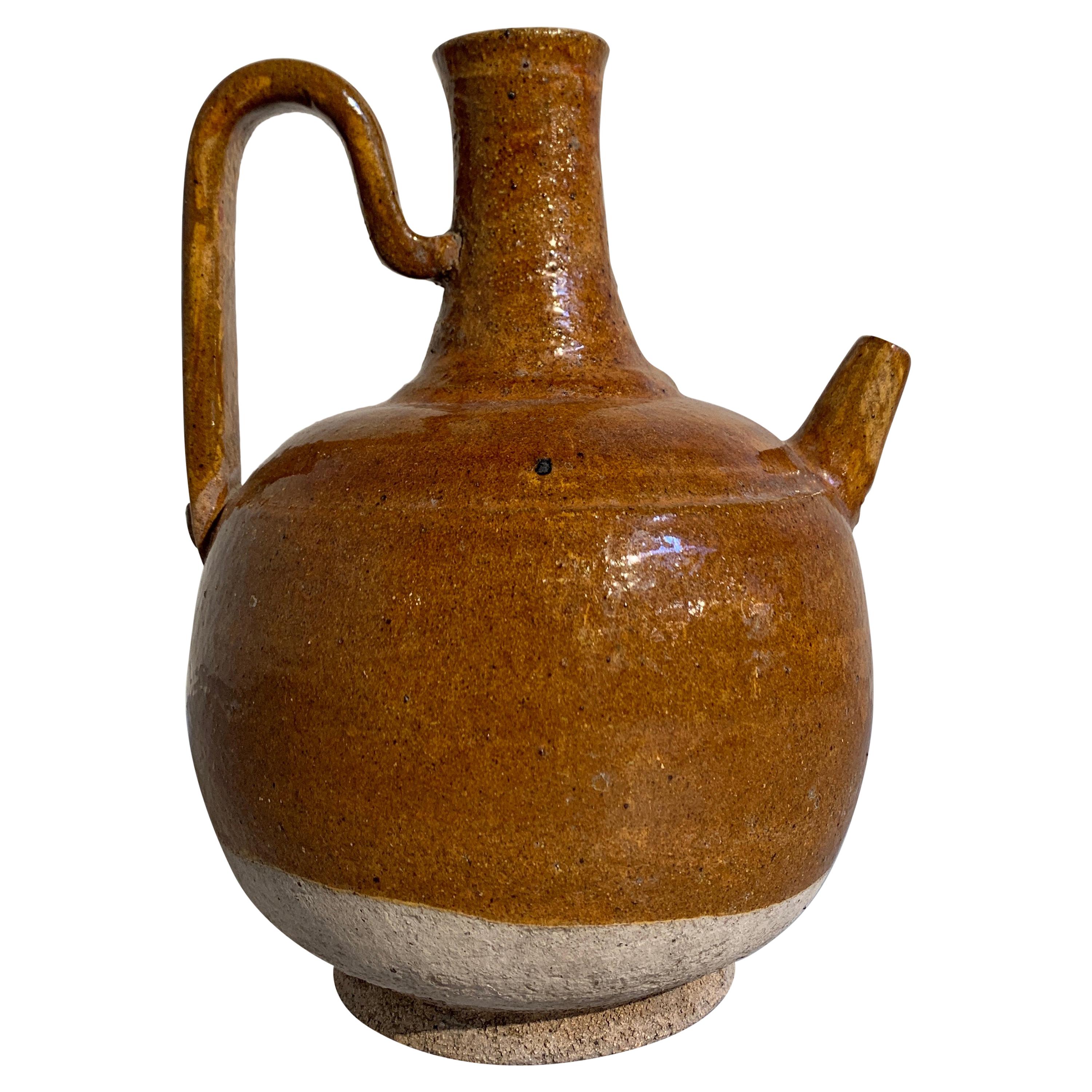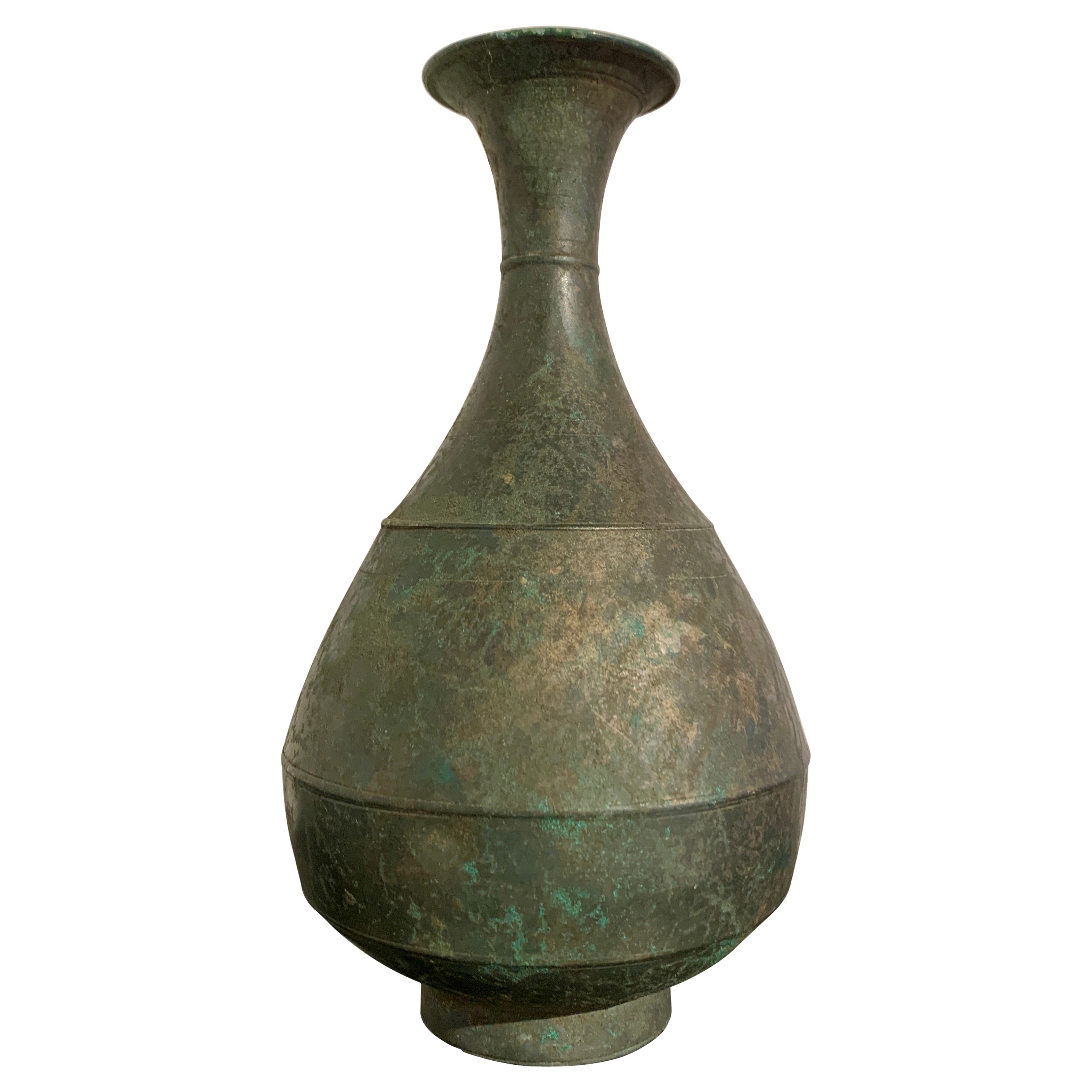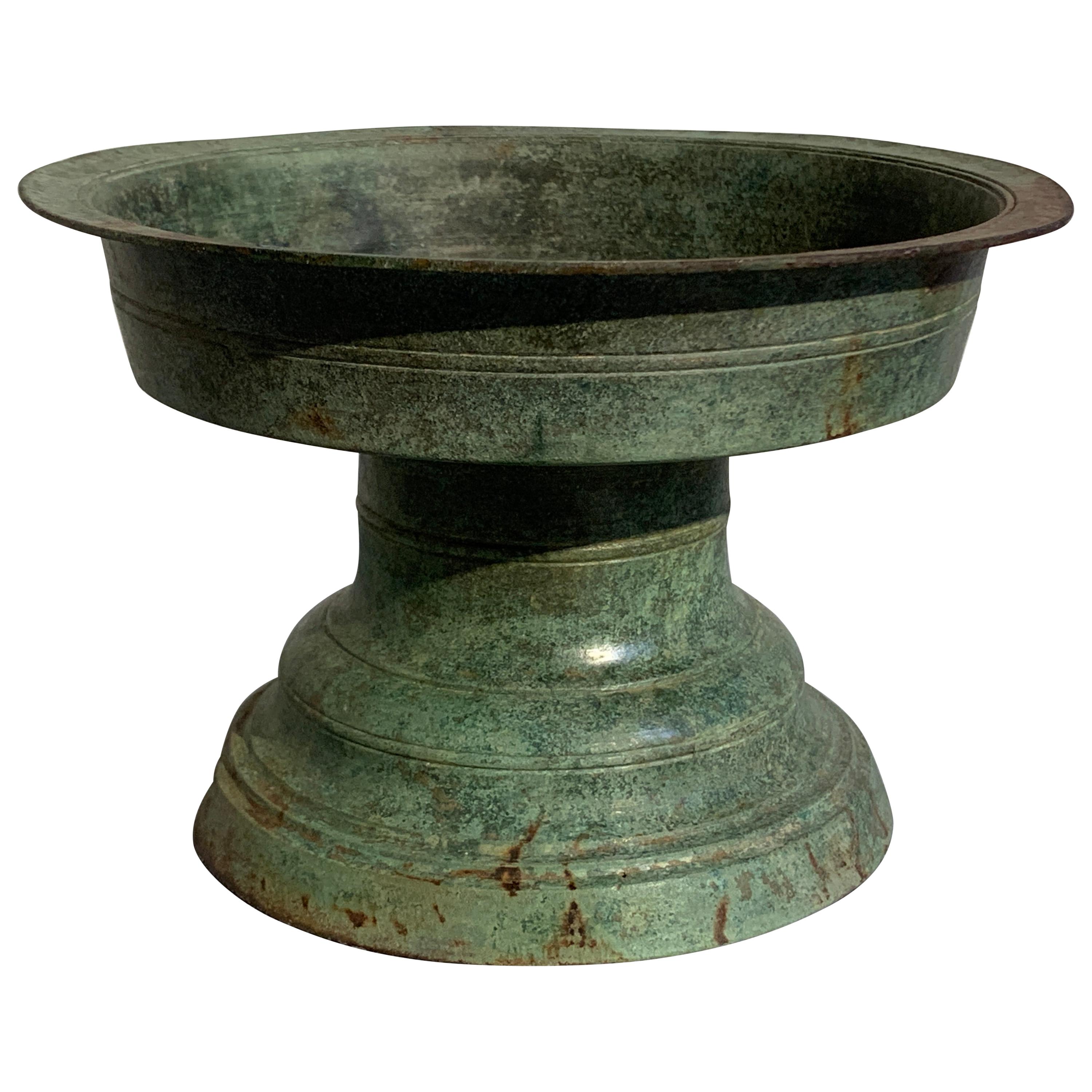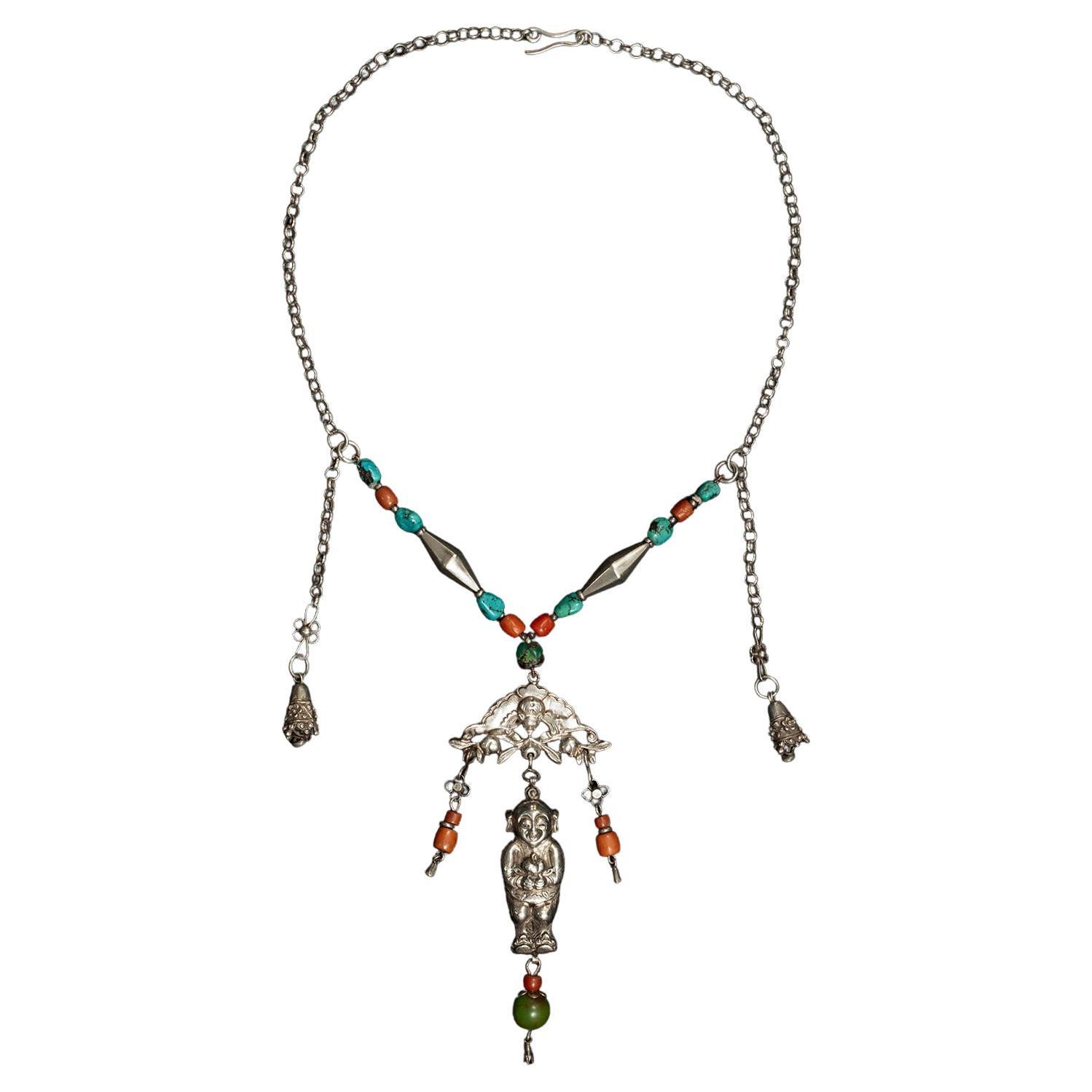Items Similar to Khitan Liao Dynasty Gold Clad Horse Trappings, 10th-11th Century, China
Want more images or videos?
Request additional images or videos from the seller
1 of 15
Khitan Liao Dynasty Gold Clad Horse Trappings, 10th-11th Century, China
About the Item
A wonderful and rare set of Khitan Liao gold clad copper alloy repousse horse trappings, featuring thirteen pieces on a modern museum display mount, Liao Dynasty (916 to 1125), China.
The fittings crafted from a copper alloy with a scrolling floral and foliate design worked in high relief repousse, then clad with a thick gold sheet overlay. The set comprised of a two part buckle, a three way buckle, and nine decorative plaques. The plaques would originally have been attached to a leather bridle. Remnants of cloth and leather are still present to the interior of some pieces.
The Khitan were a nomadic people who roamed the steppes of north eastern Asia. Consolidating power under the ruler Yelu Abaoji, they formed a powerful dynastic empire contemporaneous with the Chinese Song Dynasty, and are considered a legitimate Chinese dynasty as well, known as the Liao Dynasty.
On loan to the Heritage Museum of Art, Chicago, IL 2017 - 2019.
- Dimensions:Height: 10.25 in (26.04 cm)Width: 9 in (22.86 cm)Depth: 4.5 in (11.43 cm)
- Style:Tang (Of the Period)
- Materials and Techniques:
- Place of Origin:
- Period:
- Date of Manufacture:10th-11th Century
- Condition:Wear consistent with age and use. Minor losses. Minor fading. In very good condition for age. With some areas of verdigris. Remnants of cloth, leather and resin to the interior.
- Seller Location:Austin, TX
- Reference Number:1stDibs: LU894716946822
About the Seller
5.0
Gold Seller
These expertly vetted sellers are highly rated and consistently exceed customer expectations.
Established in 2001
1stDibs seller since 2010
304 sales on 1stDibs
Typical response time: 1 hour
- ShippingRetrieving quote...Ships From: Austin, TX
- Return PolicyA return for this item may be initiated within 7 days of delivery.
More From This SellerView All
- Chinese Liao Dynasty Amber Glazed Stoneware Strap Handle Ewer, 11th CenturyLocated in Austin, TXA lovely Chinese amber glazed pottery pouring vessel, Liao Dynasty (907 to 1125 AD). The vessel featuring a globular body with an elongated neck sligh...Category
Antique 15th Century and Earlier Chinese Tang Ceramics
MaterialsStoneware
- Korean Bronze Bottle Vase, Goryeo Dynasty, 11th/12th Century, KoreaLocated in Austin, TXAn attractive Korean Goryeo Dynasty bronze bottle vase with traces of gilding, 11th - 12th century, Korea. The vase of typical form, with a short recessed foot supporting a pear s...Category
Antique 15th Century and Earlier Korean Metalwork
MaterialsBronze
- Archaic Chinese Bronze Ritual Vessel, Gui, Early Western Zhou, 11th century BCELocated in Austin, TXA stunning and rare Chinese archaic bronze gui, a type of ritual bronze vessel used to hold grain, either for feasting, or for making offerings ...Category
Antique 15th Century and Earlier Chinese Archaistic Antiquities
MaterialsBronze
- Central Javanese Bronze Footed Offering Vessel, 8th-10th CenturyLocated in Austin, TXA gorgeously patinated bronze pedestal offering tray, talam, Central Javanese Period, Java, 8th-10th century. The offering tray of beautiful form and proportions, with a splayed a...Category
Antique 15th Century and Earlier Javanese Metalwork
MaterialsBronze
- Central Javanese Bronze Footed and Lidded Offering Vessel, 8th-10th CenturyLocated in Austin, TXA stunning and rare Javanese bronze footed offering vessel and cover, Central Javanese Period, 8th-10th century. The ritual offering vessel of elega...Category
Antique 15th Century and Earlier Javanese Metalwork
MaterialsBronze
- Chinese Yueyao Celadon Glazed Jar 'Guan', Five Dynasties, 10th CenturyLocated in Austin, TXA sublime Chinese Yueyao glazed guan jar with incised decoration and applied handles, five dynasties period (907- 979 AD), China. The vessel of somewhat flattened globular form, w...Category
Antique 15th Century and Earlier Chinese Tang Ceramics
MaterialsStoneware
You May Also Like
- Celadon Vase, Five Dynasties or Northern Song dynasty, 10th-11th CenturyLocated in seoul, KRThe form of Longquan celadon vases from the Northern Song dynasty evolved from an early design with a long neck and tapering body to a later ovoid body with a shorter neck. Over time, the glaze developed a more olive tone, and the carved decorations became more pronounced and intricate. Examples of such vases include one without a cover dated to the Yuanfeng era (1078~1085) and documented in literature, and another similar vase without loop handles preserved by the Qingyuan County Cultural Relics Bureau. An earlier example featuring loop handles and a lotus-like cover is also mentioned in historical texts. The use of Longquan covered vases, especially as funerary jars for offerings like wine and grains, was highlighted by an inscription on a piece from the Sir Percival David Collection, London. This inscription wishes for the vessel to preserve fragrant wine for centuries, blessing the owner with prosperity, longevity, and a vast lineage, dated to the third year of the Yuanfeng period (1080). This practice was common in the regions of Southern Zhejiang and Northern Fujian. A similar celadon vase from the Linyushanren collection was auctioned at Christie’s Hong Kong, emphasizing the cultural and historical significance of these artifacts. Period : Five Dynasties or Northern Song Dynasty Type : Celadon, Zhejiang province Medium : Celadon Size : 31.5 cm(Height) x 11.5(Diameter) Provenance : Acquired in 1999, Hongkong Reference : 1) The British Museum image id - 01613270570 2) Christies New York 23–24 MAR 2023 - Important Chinese Ceramics and Works of Art - Lot 1012 3) National Gallery of Victoria - Accession Number - AS5-1973 * Celadon from Five Dynasties (907~960) to the early Northern Song Dynasty (960~1127) The period from the Five Dynasties (907~960) to the early Northern Song Dynasty (960~1127) marked a significant transitional phase in the development of Chinese celadon ceramics...Category
Antique 15th Century and Earlier Chinese Ming Antiquities
MaterialsCeladon
- Late 19th to Early 20th Century Silver Baby Amulet Necklace, ChinaLocated in Point Richmond, CALate 19th to early 20th century silver baby amulet necklace, CChina A wonderfully balanced silver chain necklace with coral and turquoise beads is anchored by a bat, from which da...Category
Early 20th Century Chinese Qing Metalwork
MaterialsCoral, Silver
- Indian Jhansi, Bundelkhand Bronze Toy Horse FigureLocated in Bishop's Stortford, HertfordshireA good antique bronze temple horse on wheels toy originating from Jhansi City in Bundelkhand in Northern India and dating from the 19th century. The Hindu region of Bundelkhand is we...Category
Antique 19th Century Indian Anglo-Indian Metalwork
MaterialsBronze
- Antique Brass Chinese BrazierLocated in North Hollywood, CAAntique brass Chinese brazier. Filled with burning coals, this exquisitely crafted brass brazier used to warmed the hands of a wealthy Chinese on a cold...Category
Mid-20th Century Chinese Chinese Export Metalwork
MaterialsBrass
- Large Chinese Bronze Relief Enameled Vase, Qing Dynasty, 19th CenturyLocated in Islamabad, PKLarge Chinese Bronze Relief Enameled Vase, Qing Dynasty, 19th Century The vase's surface is adorned with intricate relief work that depicts a stunning tableau of flowers and birds. ...Category
Antique 19th Century Chinese Qing Metalwork
MaterialsBronze
- Collection of 18th and 19th Century Arabic Astrolabes and QuadrantLocated in London, GBA collection of 18th and 19th century Arabic astrolabes and quadrant Persian, 18th/19th Century Largest: height 23cm, width 13cm, depth 3cm Smallest: height 6.5cm, width 4.5cm, depth 1.5cm This excellent set of antique astronomical instruments is a selection of five Persian brass astrolabes...Category
Antique Early 19th Century Persian Islamic Scientific Instruments
MaterialsBrass
Recently Viewed
View AllMore Ways To Browse
Thick Gold
Asian Gold
Museum Display
Chinese Black Gold
China Black And Gold
Chinese Black And Gold
China Set Gold
Horse Asian
Heritage China
Gold And Black Display Furniture
Asian Horse Art
11th Century
Antique Chinese Horses
Antique Chinese Horse
Antique China Horse
Chinese Antique Horse
Chinese Antique Horses
Empire Art Gold





